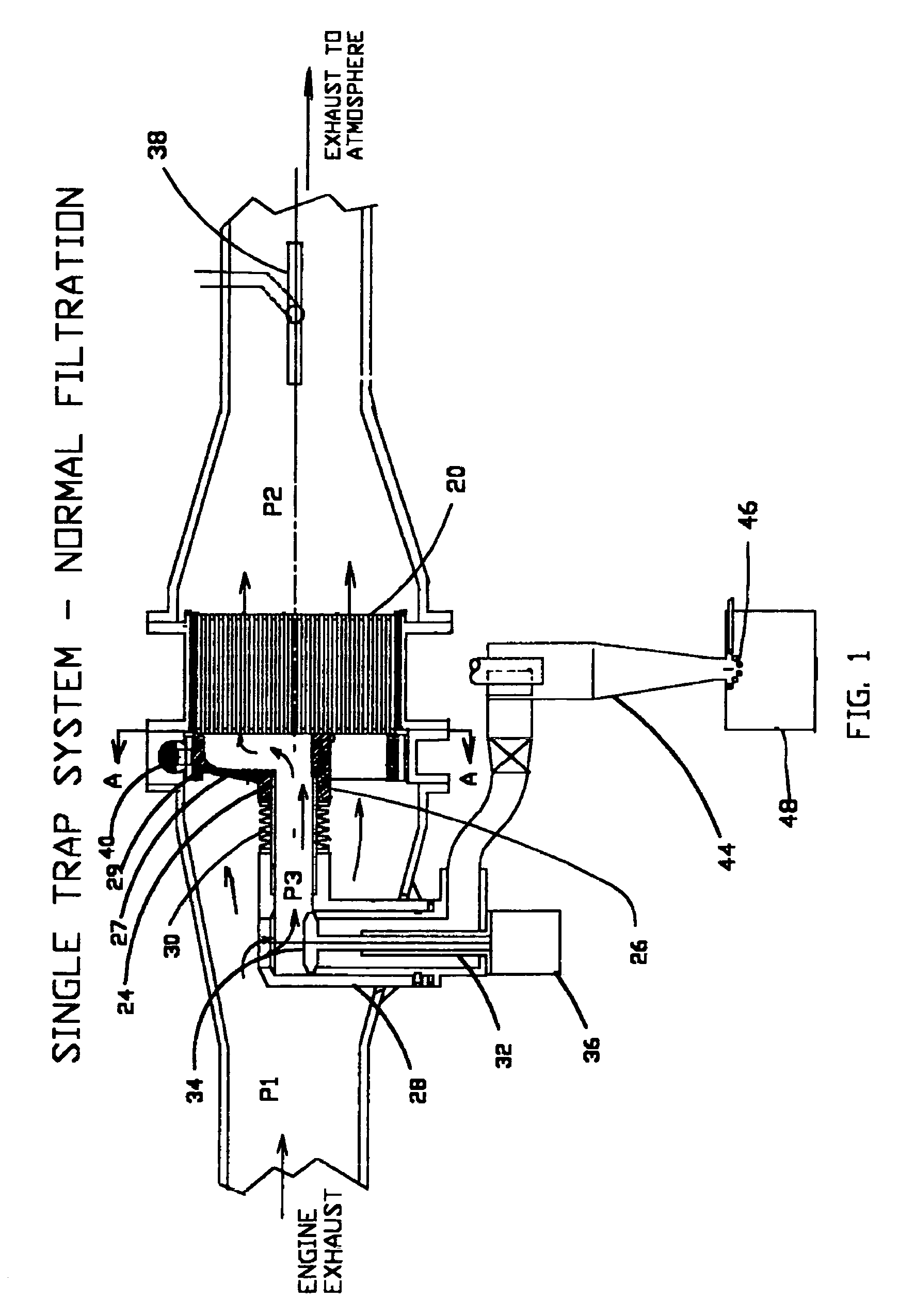Particulate trap system and method
a technology of particulate traps and traps, which is applied in the direction of separation processes, machines/engines, transportation and packaging, etc., can solve the problems of incombustible ash accumulation, high cost of noble metal catalytic coatings, and insufficient use of ultra-low sulfur fuels, so as to reduce the time, effectively dislodge, and reduce the effect of dislodg
- Summary
- Abstract
- Description
- Claims
- Application Information
AI Technical Summary
Benefits of technology
Problems solved by technology
Method used
Image
Examples
Embodiment Construction
[0061]In this Description all values are approximate and the values may vary as a result of product configuration, usage, and requirements.
[0062]FIGS. 1 and 2 show the salient features of a particulate trap system with which various improvements are utilized. The principal parts are a monolithic wall-flow trap 20, a duct rotor 24, a duct rotor ratchet actuator 40, a mode valve assembly 32, a remotely actuated relief valve 38, and a cyclone separator 44, with its attached igniter 46 and ash storage chamber 48. The mode valve assembly 32 includes a purge duct 28, a two-position valve 34, and a mode valve actuator 36. The duct rotor 24 includes a duct section 27 and a ring gear 29, and is mounted loosely on a pilot bearing 26 which keeps the duct rotor centered. The duct rotor 24 is pressed against the face of the trap 20 by a spring / seal 30, with just enough force to preclude the duct rotor from moving off the face of the trap due to inertia or gas loading. The contact between the duc...
PUM
| Property | Measurement | Unit |
|---|---|---|
| reverse pressure drops | aaaaa | aaaaa |
| reverse pressure | aaaaa | aaaaa |
| reverse pressure | aaaaa | aaaaa |
Abstract
Description
Claims
Application Information
 Login to View More
Login to View More - R&D Engineer
- R&D Manager
- IP Professional
- Industry Leading Data Capabilities
- Powerful AI technology
- Patent DNA Extraction
Browse by: Latest US Patents, China's latest patents, Technical Efficacy Thesaurus, Application Domain, Technology Topic, Popular Technical Reports.
© 2024 PatSnap. All rights reserved.Legal|Privacy policy|Modern Slavery Act Transparency Statement|Sitemap|About US| Contact US: help@patsnap.com










